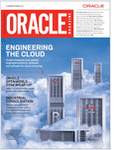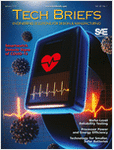For centuries, explorers have risked their lives venturing into the unknown for reasons that were to varying degrees economic and nationalistic. Christopher Columbus went west to look for better trade routes to the Orient and to promote the greater glory of Spain. Lewis and Clark journeyed into the American wilderness to find out what the U.S. had acquired in the Louisiana Purchase, and the Apollo astronauts rocketed to the moon in a dramatic flexing of technological muscle during the cold war.
Although their missions blended commercial and political-military imperatives, the explorers involved all accomplished some significant science simply by going where no scientists had gone before. The Lewis and Clark team brought back samples, descriptions and drawings of the flora and fauna of the western U.S., much of it new to the colonizers and the culture they represented. The Apollo program, too, eventually gushed good data. "Our fundamental understanding of the overall geological history of the moon is largely derived from the last three Apollo missions," says Paul D. Spudis, a geologist and staff scientist at the Lunar and Planetary Institute in Houston.
Today Mars looms as humanity’s next great terra incognita.
—Glenn Zorpette, "Why Go to Mars?" Scientific American, March, 2000, pp. 40-41.
1. What is the main idea of this passage?
A. Mars will be the next place humans will explore.
B. People explore for a mixture of economic and nationalistic reasons.
C. Lewis and Clark brought back important information about the American west.
D. Columbus wanted to get to the East by sailing west.
2. In this passage, the word imperatives means
A. commands
B. conquests
C. reasons
D. voyages
3. The passage states that the Apollo missions provided information about the moon’s
A. history
B. gravity
C. economic value
D. distance from the Earth
4. The author’s purpose in discussing the exploration of the moon and the American west is to
A. persuade the reader that exploration is important
B. inform the reader about history
C. hint at reasons for future missions to Mars
D. narrate an interesting series of events
5. The author states that Columbus wanted to find new trade routes and to
A. conquer the Native American people
B. find gold
C. find new plants and animals
D. promote the glory of Spain
Before examining each of these theories in depth, let’s first consider the role of theory in education. In general, theories examine patterns and relationships and provide explanations for phenomena that we observe in nature. Sound theories explain known relationships and are useful in making predictions about the world that will be verified later. Based on application of theory, we know what is likely to happen when we observe a pattern or a relationship. Confidence in a theory grows as new situations arise and the theory is useful in making predictions. Once scientists disprove a theory, it is modified or replaced by a better theory. Scientists value simplicity, and simpler theories are often more acceptable than complicated ones.
As a teacher, it is important to be aware of the numerous theories of teaching and learning so that you can make informed, intelligent decisions about providing instruction for students.. As a teacher, you will view learners through multiple lenses, looking at what happens as the mind and body develop while being aware of the effects of the social world.
— Sharon Sherman, Science and Science Teaching, p. 107
6. In this passage, application means
A. Test
B. Teaching
C. Use
D. relationship
7. This passage is mostly about how theories are
A. rejected
B. employed
C. taught
D. formulated
8. According to the passage, teachers use theories to
A. understand students
B. decide what to teach
C. decide on students’ grades
D. understand subject matter
9. The passage states that our confidence in a theory grows when it allows us to
A. formulate new theories
B. reject other theories
C. find new phenomena to explore
D. make predictions about the world
10. The author’s purpose in this passage is to A. narrate a sequence of events
B. introduce a new topic
C. persuade the reader that theory is important
D. appeal to the reader’s senses
Answers:
1. B
2. C
3. A
4. C
5. D
6. C
7. B
8. A
9. D
10. B
October 24, 2007



